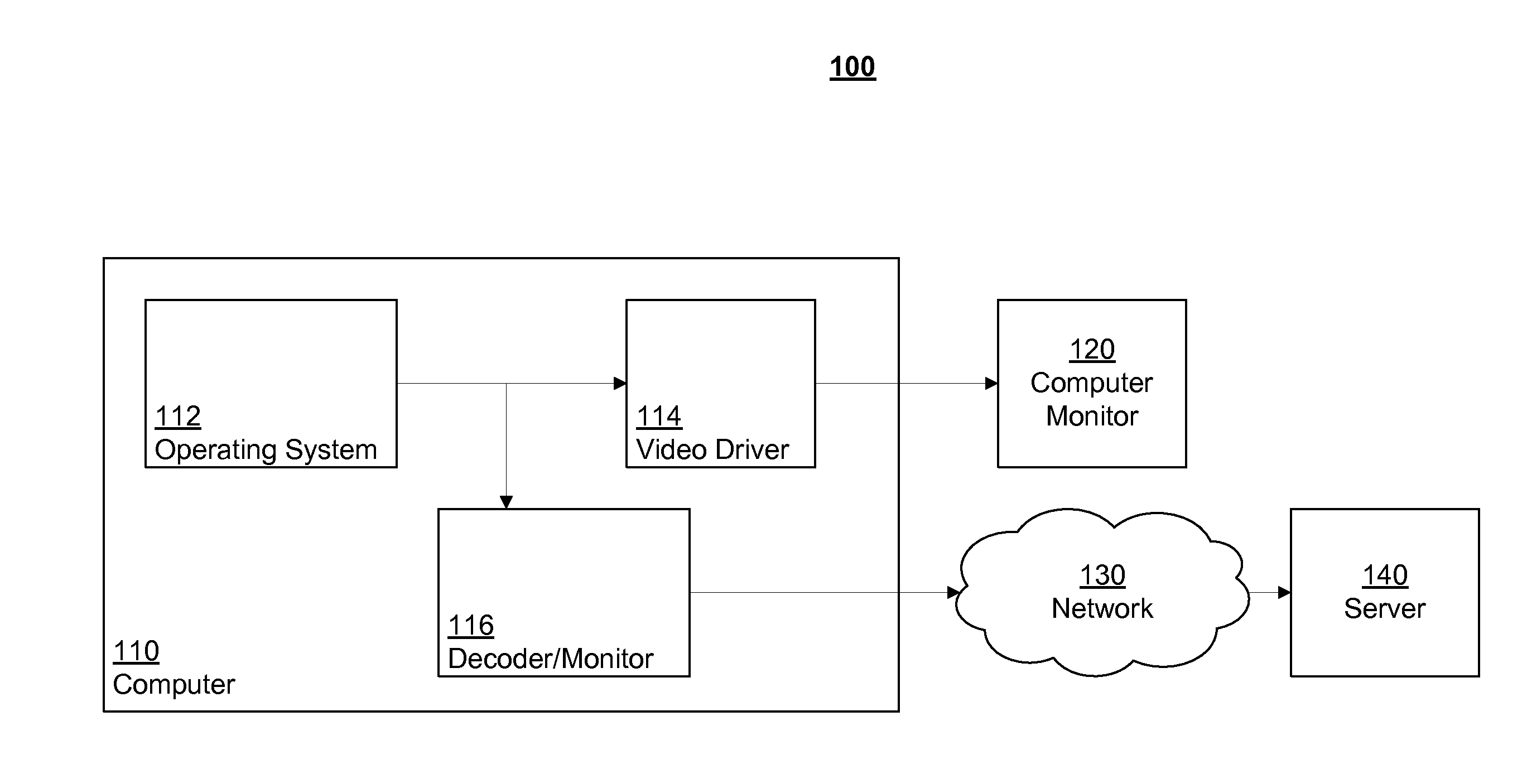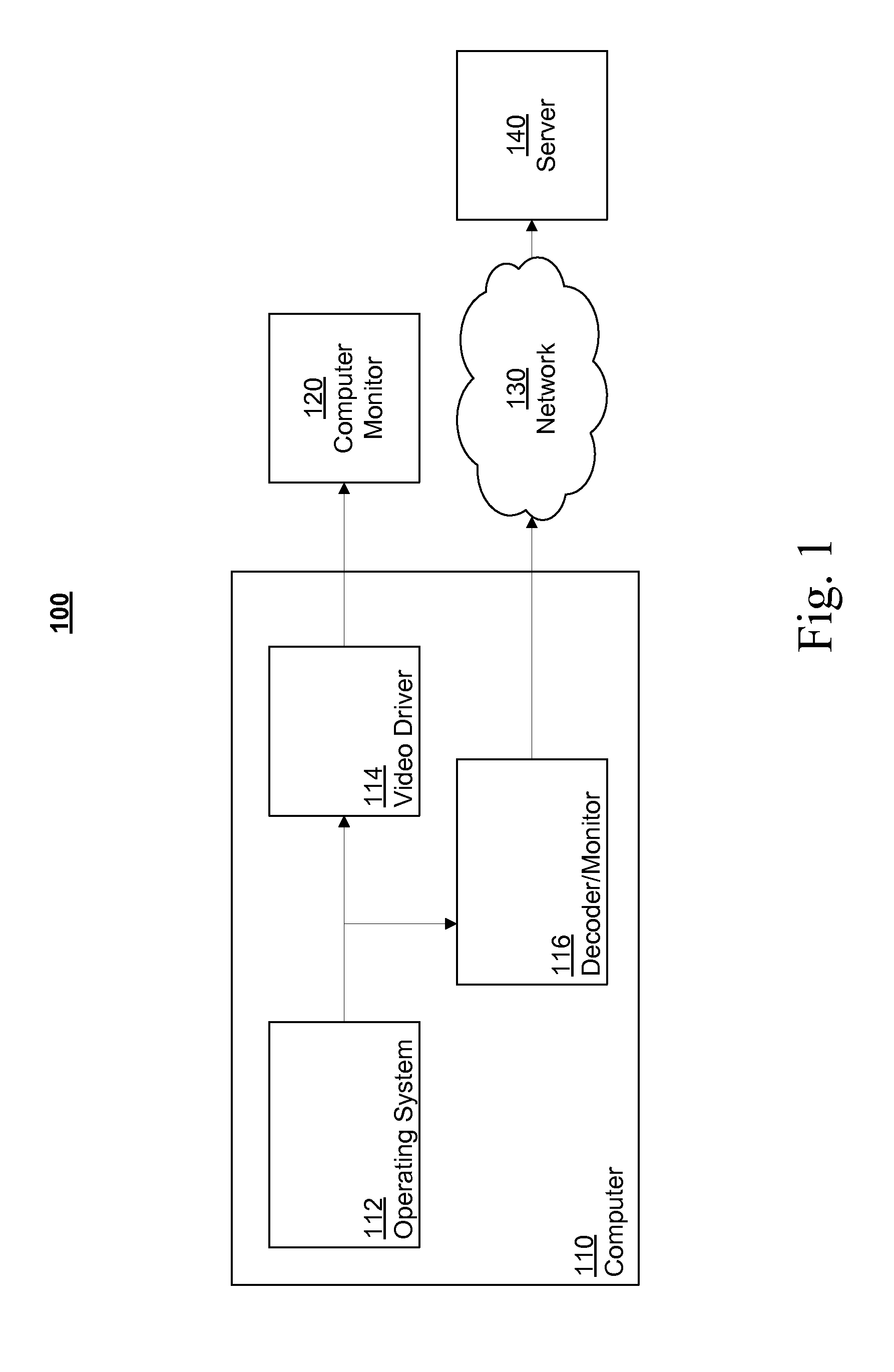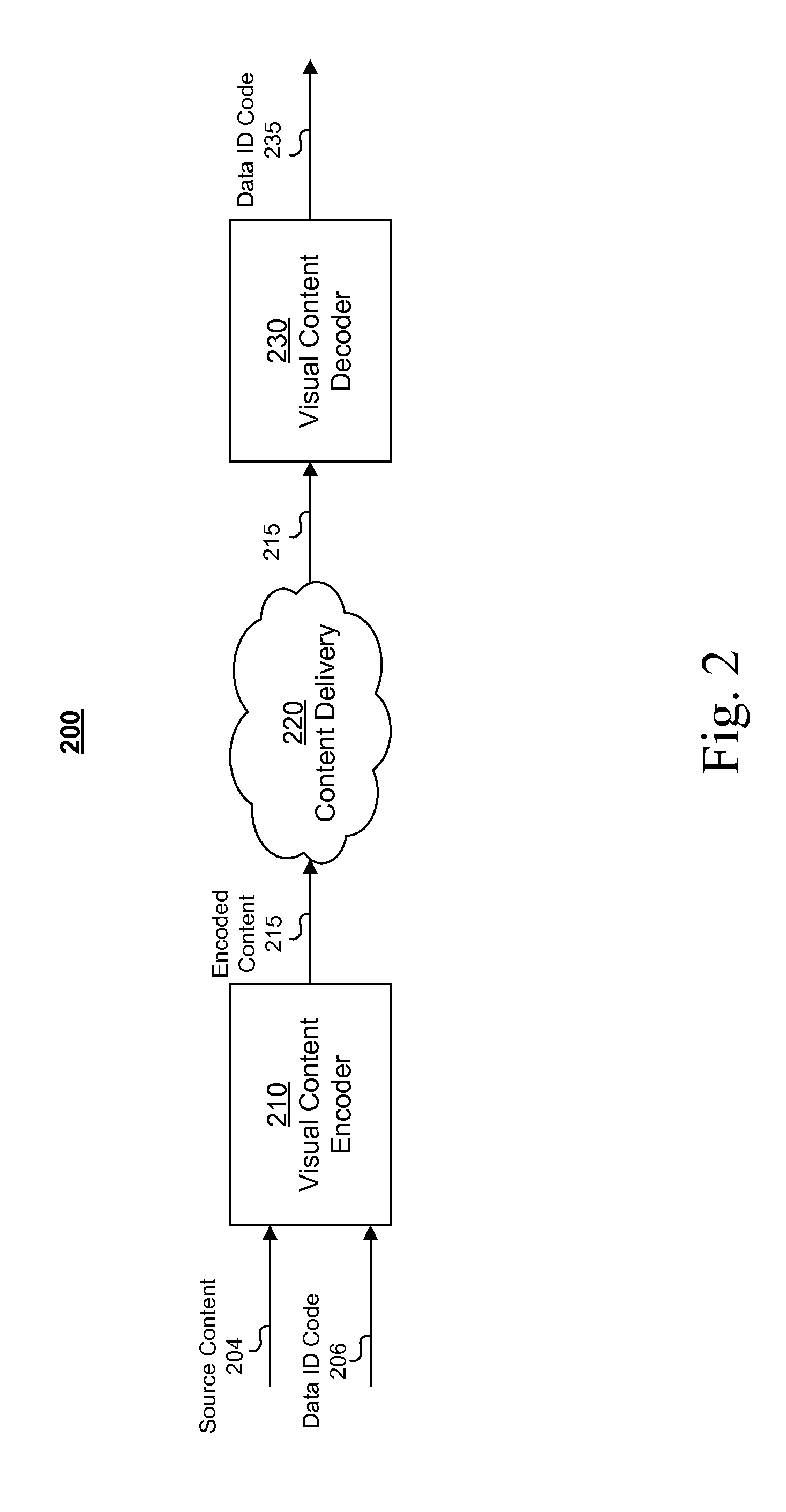Visual Content Detection for Computer-Delivered Advertisement Exposure Measurements
a technology of computer-delivered advertisements and exposure measurement, which is applied in the direction of multi-digital computer combinations, marketing, etc., can solve the problems of not providing any indication whatsoever of the length, not measuring whether the visual content was actually delivered to the computer's screen, and not working for certain forms of embedded web content. , to achieve the effect of determining the advantageous length of time for visual content exposure and determining the exposure of visual conten
- Summary
- Abstract
- Description
- Claims
- Application Information
AI Technical Summary
Benefits of technology
Problems solved by technology
Method used
Image
Examples
Embodiment Construction
[0015]The invention makes use of an encoder / decoder system whereby visual content data (e.g., static images, animated images, video data, and / or other visual content data) is encoded with an identifier code. For example, visual content data can be encoded with a mark using digital image watermarking. In some embodiments, the identifier code is encoded in a manner that minimizes its visual appearance to the human eye, but still allows the identifier code to be detected by software and / or hardware.
[0016]FIG. 1 is a block diagram showing an exemplary system 100 with devices relating to decoding visual content. The system 100 includes a computer device 110, a visual display device 120, a network 130, and a server 140. The computer device 110 can include an operating system 112, a video driver 114, and / or a decoder / monitor 116. In some embodiments, the computer device 110 can include a personal computer (e.g., desktop or laptop) or a mobile communications device with a display (e.g., a c...
PUM
 Login to View More
Login to View More Abstract
Description
Claims
Application Information
 Login to View More
Login to View More - R&D
- Intellectual Property
- Life Sciences
- Materials
- Tech Scout
- Unparalleled Data Quality
- Higher Quality Content
- 60% Fewer Hallucinations
Browse by: Latest US Patents, China's latest patents, Technical Efficacy Thesaurus, Application Domain, Technology Topic, Popular Technical Reports.
© 2025 PatSnap. All rights reserved.Legal|Privacy policy|Modern Slavery Act Transparency Statement|Sitemap|About US| Contact US: help@patsnap.com



